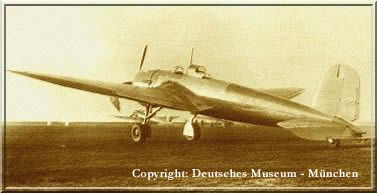After all he had learned with the He 176 rocket aircraft, developed in close cooperations with the RLM, Heinkel was embittered at not receiving the support he expected. After the first flights the gentlemen lost interest. This did not mean everybody in decisive positions at the RLM, but the Second World War was looming, and there were other things to worry about. The He 176 had been officially supported and developed with the RLM approval almost from inception, but not the He 178. The 178 design was pushed through without the knowledge of the RLM, and it was this small aircraft which was later to usher in the Jet Age.
As already mentioned, for the construction of the He 176 towards the end of 1936, Heinkel had built a special hall near the Wasserhalle to one side of the giant assembly hangars. The 176 was developed there, and this was where Hans Joachim Pabst von Ohain worked on his turbines. By February 1937 the first of these was running on the test bed.
.
 Erich Warsitz: "When Ohain's He-S3 turbine was finally ready, first of all we planned a basic flight with myself in the cockpit, since I was the test pilot-specialist for all Heinkel's rocket designs. The turbine would be installed as an auxiliary motor as we had done previously with the von Braun and Walter rockets. We chose the He 118, a heavy two-seater reconnaissance aircraft. It stood well above the ground, and the large undercarriage gave us the necessary clearance to install the turbine below the fuselage. On the third flight the turbine caught fire, however, and although I was able to land straight away, the whole aircraft burned and that put an end to the in-flight testing with that particular engine." Erich Warsitz: "When Ohain's He-S3 turbine was finally ready, first of all we planned a basic flight with myself in the cockpit, since I was the test pilot-specialist for all Heinkel's rocket designs. The turbine would be installed as an auxiliary motor as we had done previously with the von Braun and Walter rockets. We chose the He 118, a heavy two-seater reconnaissance aircraft. It stood well above the ground, and the large undercarriage gave us the necessary clearance to install the turbine below the fuselage. On the third flight the turbine caught fire, however, and although I was able to land straight away, the whole aircraft burned and that put an end to the in-flight testing with that particular engine."
.
Once the second turbine, the He-S3-A, was ready at the beginning of 1939, it was fitted in the He 178 frame which Heinkel had had built meanwhile. This was a shoulder-winged monoplane of all-light metal construction, the fuselage being of duralium. The machine had been built with an eye to safety, had a broad wheelbase, adequate large brakes and bore no comparison to the He 176.
.
« back 1 2 3 4 5 6 7 next » --Page 6 of 7 |

